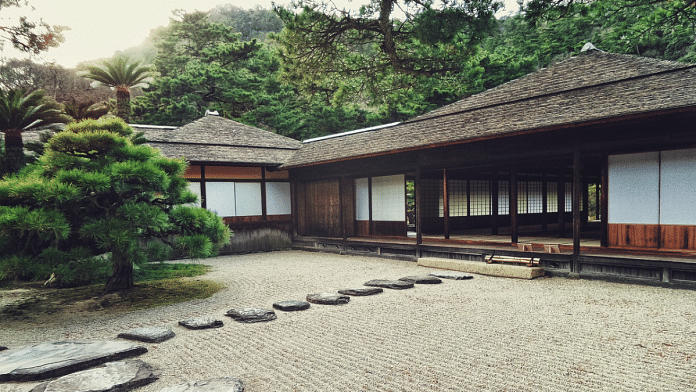With Japan’s ageing population and declining birth rates, the number of abandoned homes is rapidly increasing. According to a survey by the Ministry of Internal Affairs and Communications, the number of empty homes has risen 1.5 times to about 8.49 million units over the 20 years leading up to 2018. This equates to about one out of every eight homes being empty, and it is estimated that by 2038, the number of empty homes will rise to 23.03 million units.
The survey places these abandoned homes into four categories:
- To rent.
- For sale.
- Secondary residences.
- Other
Those categorized as “other” account for over 40% of the total. The same survey reveals that approximately 90% of the long-term empty homes, left untouched without being sold or rented, are single-family houses. Among them, about 70% were built before 1980.
About 59% of these abandoned homes are inherited properties. Most inheritors find themselves in possession of homes previously occupied by their ancestors or parents. Still, for various reasons, including distance from their current residence, they are unable to manage them, leading to neglect.
Additionally, the current preferential treatment in property tax for residential land, which reduces taxes by up to one-sixth, incentivizes owners not to demolish vacant homes to lower their tax burden, thus contributing to the proliferation of vacant properties.
Measures curbing empty homes
Risks posed by poorly managed empty homes, such as collapse due to ageing, deterioration of hygiene and aesthetics, and adverse effects on the living environment of residents, can lead to a decline in the value of residences and neighbourhoods.
The government enacted the Vacant Houses Special Measures Law in 2015 to address the increasing number of empty properties. This legislation designates high-risk properties, such as those at risk of collapse if abandoned, as “specified vacant homes.” According to the law, owners of these properties must either demolish or repair them, with the government authorized to enforce demolition at the owner’s expense if they fail to comply.
Furthermore, the law was revised last December to include a new category called “poorly managed long-unoccupied homes,” which encompasses properties with signs of potential deterioration, such as broken windows or walls. If the situation does not improve, the tax reduction measures for these properties can be revoked.
Efforts to address empty homes are gaining momentum among local governments. In Setagaya Ward, Tokyo – estimated to have the highest number of empty homes among municipalities nationwide – approximately 50,000 initiatives are in place to support the creation of wills to prevent empty homes from emerging via partnerships with non-profit organizations.
The aim is to assist seniors in creating wills while in good health to avoid prolonged inheritance discussions that arise due to high land value, a common cause of long-term empty homes emerging.
Startups tackling empty homes
Various startups are also addressing the myriad problems associated with abandoned homes. For instance, Crassone provides a matching service that connects individuals looking to dispose of empty homes with suitable companies from over 1,900 demolition specialists partnered with the company.
They provide comprehensive services from simulating demolition costs and post-demolition land appraisal prices using AI to services related to land use after demolition.
Additionally, the company collaborates with 75 municipalities nationwide, contributing to the proper removal and management of abandoned homes that individual municipalities cannot handle alone, as well as avoiding administrative enforcement for specified vacant homes.
Furthermore, Renobank aims to curb the increase in empty homes and revitalize the secondhand housing market by renovating unoccupied properties and transforming them into livable homes. It also operates a portal site where users can search for information on secondhand houses (empty homes) and their renovation costs and assess the value of their properties online.
Currently, the company is also advancing the development of an AI model that can automatically generate images depicting the layout and design of second houses after renovation in a short period.
AGE Technologies addresses the challenges of inheritance, a significant factor contributing to empty homes. By offering a one-stop web service that streamlines the complex process of real estate inheritance procedures, the company is advancing the establishment of a foundation for proper inheritance registration of empty homes and ensuring appropriate management of real estate properties.
Collaborating on secondhand housing
In September 2023, 11 companies and organizations from real estate, finance, IT and other sectors joined forces to establish a consortium to address the issue of abandoned homes. Through information dissemination, policy recommendations and the exchange of views, the consortium aims to strengthen public-private collaboration to curb the increase in empty houses.
Takashi Inoue, chief executive officer of LIFULL and a director of the consortium, suggests that if approximately 5 million out of the estimated 8.5 million empty homes were utilized, it could create a market worth around JPY 30 trillion (approximately $203 billion), highlighting the significant potential in addressing the empty home issue.
Globally, the proportion of secondhand properties in the housing market is 80% in the United States and 89% in the United Kingdom. In Japan, where new houses are highly favoured, this figure remains at 15%.
However, with the rising prices of new properties, there is increasing demand for existing homes. Effectively utilizing abandoned homes is expected to revitalize the market for existing homes, contributing significantly to sustainable and vibrant community development.
This article was originally published in the World Economic Forum.




The abundance of vacant homes would pull the construction industry downwards that would push the economy towards recession.